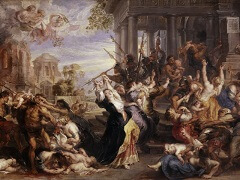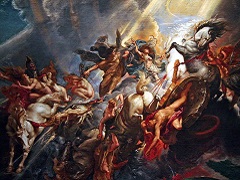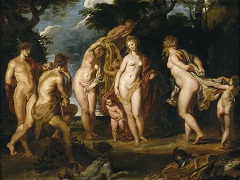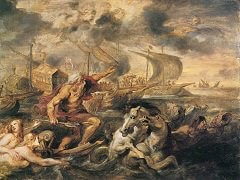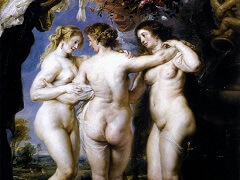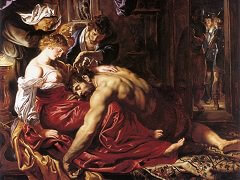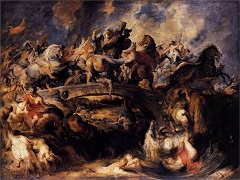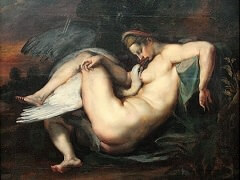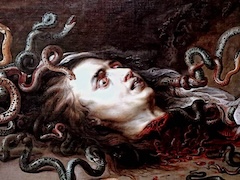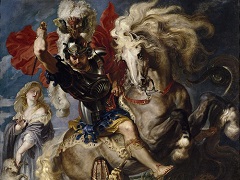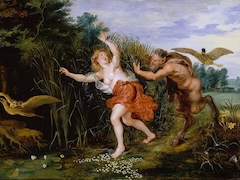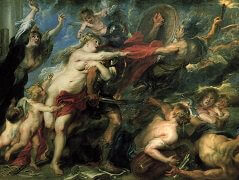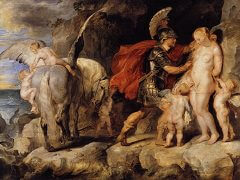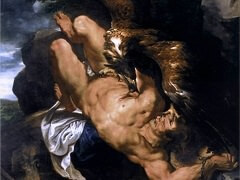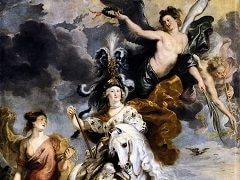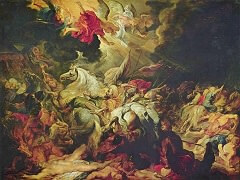Raising of the Cross, 1610 by Peter Paul Rubens
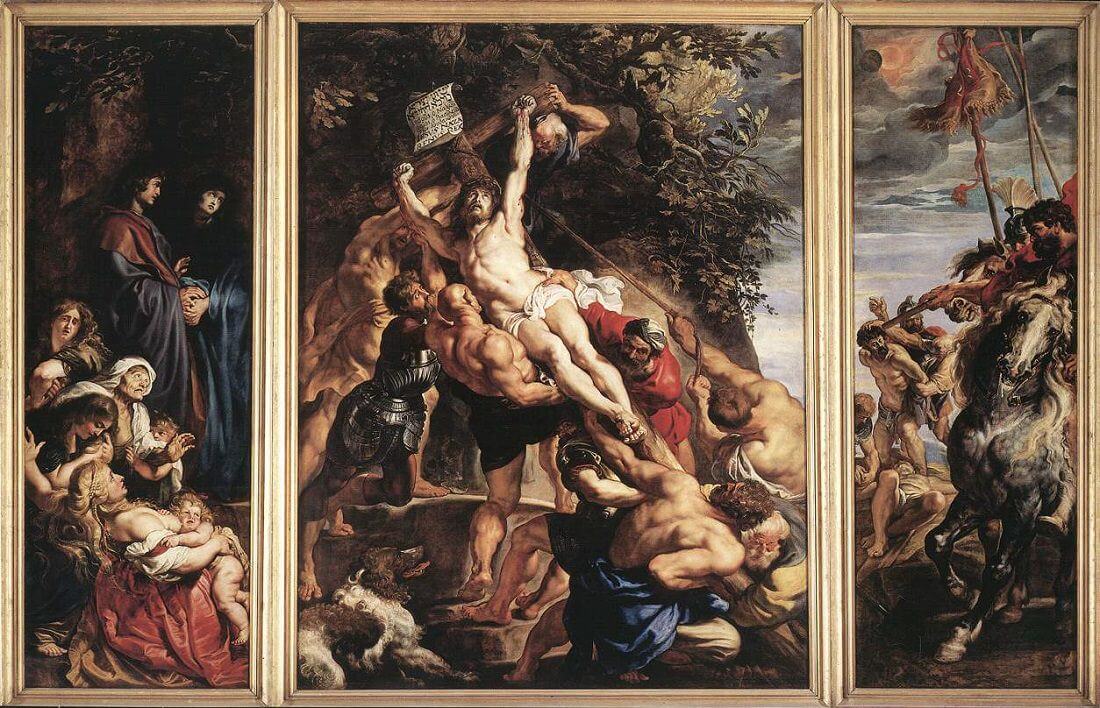
Rubens painted the triptych for the high altar of Antwerp's church of St Walpurgis, which was demolished in 1817. That explains the inclusion of Amand, Walpurgis and Eligius on the back side of the wings.
The triptych marked Rubens' sensational introduction of the Baroque style into Northern art. The diagonal composition is full of dynamism and animated colour. The artist had just returned from Italy, with the memory of Michelangelo, Caravaggio and Titian painting still fresh in his mind. The Raising of the Cross is the perfect summation of the unruly bravura that marked his first years in Antwerp.
In the centre nine executioners strain with all their might to raise the cross from which Christ's pale body hangs. The dramatic action is witnessed from the left by St John, the Virgin Mary and a group of weeping women and children. On the right, a Roman officer watches on horseback while soldiers in the background are crucifying the two thieves. In other words, the subject is spread across all three panels. The outside of the wings shows Saints Amand, Walpurgis, Eligius and Catherine of Alexandria.
The painting was confiscated by the French in 1794 and taken to Paris. It was returned to Antwerp in 1815, following the defeat of Napoleon, and installed in the church of Our Lady.
During restoration in the 1980s, successive layers of varnish, which had form an even grey veil over the painting, were removed. The burgeoning talent of the confident young Rubens is more clearly visible now in the intense emotion of the figures, the contrasting lighting, the glow of the labouring bodies and the gleam of the armour and costly robes.



